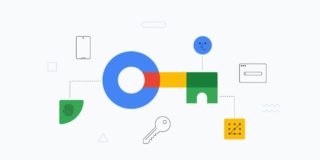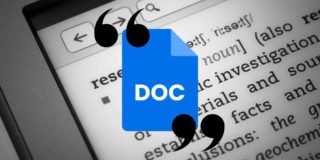11 Hidden Windows 7 Features You Probably Don’t Know About
![]() There’s actually quite a bit more to Windows 7 than a lot of users seem to realize. This is actually somewhat surprising, given how long the operating system has been on the market – and given the fact that Microsoft has already (perhaps mistakenly) moved on to pimping Windows 8.
There’s actually quite a bit more to Windows 7 than a lot of users seem to realize. This is actually somewhat surprising, given how long the operating system has been on the market – and given the fact that Microsoft has already (perhaps mistakenly) moved on to pimping Windows 8.
Given that many of us are likely planning to stick with Windows 7 for the foreseeable future, it wouldn’t be such a bad idea to take a bit of time and learn about all these secret goodies and hidden gems, no? Today, we’re going to have a quick look at 11 different features, utilities, and apps built-in to the operating system.
Now, I’ll admit that some of these are more obscure than others, just as I’ll acknowledge that many of the more hardcore Windows fanatics out there have probably discovered the majority of these gadgets on their own. Still, that doesn’t make them any less useful, although some are most certainly more obscure than others. Many of the items on this list actually serve functions that most users download secondary utilities to accomplish.
Snipping(Screenshots)
This one actually surprised me a bit: Windows 7 actually comes with its own screenshot utility. Simply type “snipping” into Windows Search, and you’ll be brought to the “snipping tool.”
The utility allows you to take four different kinds of screenshots: full-screen, window, rectangular, or free-form. Further, the tool comes with its own built-in image editor, allowing you to highlight, mark, and color the shot, as well as save it as an HTML, JPG, PNG, or GIF file.
Sticky Notes
Here’s a rather niche app for all of you: sticky notes allows you to create small, digital reminders that you can plop down all over your desktop.
You can create as many of these notes as you want, and select from a variety of different colors as you do so (though the default is yellow). Additionally, you can use the full array of Microsoft Word keyboard shortcuts while typing out your notes.
Could be useful if you don’t have an actual sticky note to paste to your screen, I suppose.
Magnifier
The Magnifier tool can be found on the Control Panel, under the “Ease of Access Center.” Simply navigate there and turn the magnifier on. Once activated, it can be set to either full-screen, lens, or docked mode.
Lens will change your mouse to a magnifying glass, zooming in to whatever you place it over. Full Screen will fill the whole screen with the magnified image, while Docked Mode will replace the upper half of your screen with the magnified bottom half.
Remote Assistance
Remote Assistance can be a useful tool for troubleshooting computer problems. Let’s say you’re having an issue with something on your system, but your tech-savvy friend can’t come over to help you. Simply navigate to the control panel, and look under “System.” From there, you can see a few options relating to Remote Assistance: one will be related to actually providing the assistance, while the other sends the invite.
“Problem Steps”
You can also use the “Problem Steps Recorder” (type psr in Windows Search) to record a play-by-play of everything you’re doing on your system. Once you’ve started recording, it’ll start compiling an MHT file with screenshots of all your monitors along with a description of what you’re doing. Once you’ve recorded whatever it is you’re having trouble with, turn off the recorder, save the file, and send it to whoever’s helping you.
Sound Recorder
Windows 7 also features a very rudimentary sound recording utility. It’s not good for much aside from making voice memos (or perhaps recording a meeting), but it’s handy in a pinch if you don’t have any alternatives.
The only file-type it’s capable of recording is WMA. You’ll need to use an audio converter if you want a different format.
Malicious Software Removal Tool
Though it’s most definitely not an ideal solution, Windows 7 comes prepackaged with a simple malicious software removal tool. Type “mrt” into Windows Search.
Given that the definitions list is quite limited, I would highly recommend against using this as your primary antivirus program. It’s more of a failsafe, in the event that your regular AV misses something.
Disc Burner
This one’s pretty straightforward (and not really hidden, either). If you’re trying to burn an ISO file to a disc, the Disc Burner tool will pop up (assuming you don’t have any other utilities installed). It’s fairly rudimentary, like many of the tools here, but it nevertheless serves its purpose quite well.
Power Efficiency Report
This rather nifty application gives you a run down of how energy-efficient your system is, and gives details on what applications, processes, and potential system errors are running it into the ground.
To access it, run CMD (Command prompt) as an administrator. Once you’re in, simply type “powercfg /energy. There’ll be a 60-second check, and then you’ll be notified where the log file has been stored.
System Health Utility
Computers aren’t indestructible. The hardware within them tends to age and break down over time, while the software starts to develop bugs and glitches as it putters away at whatever you’ve set it to do. In order to keep your system in top shape, it may be worthwhile to run a tool known as the “System Diagnostics Report.”
In order to access this application, simply run “perfmon.msc.” You’ll have a 60 second lag, after which you’ll be given a report on what’s wrong with your computer (and possibly how it can be fixed).
Screen Calibration
Last, but not least, if you’re having some issues with the colors on your desktop, you can use Windows 7’s built in screen calibration utility to fix the problem. Simply run “dccw,” and you’ll be able to calibrate brightness, sharpness, contrast, and color.
That’s it for today. A fairly long list, but by no means a comprehensive one. I’m aware there are plenty more hidden goodies where these ones came from. With that said, do you know of any secret tools or cool features that I missed? Drop me a line in the comments!
Via Make Use Of, Tune-Up
















4 thoughts on “11 Hidden Windows 7 Features You Probably Don’t Know About”
Windows has always been DOS based! From the cmd line: ‘msconfig’ and ‘ipconfig’ are most useful for System & Internet parameters such as startup programs (via the System popup window), IP addresses, and Router data.
I tried the Power Efficiency Report; it generated a file called power-report.html in the System 32 folder, however, it doesn’t open.